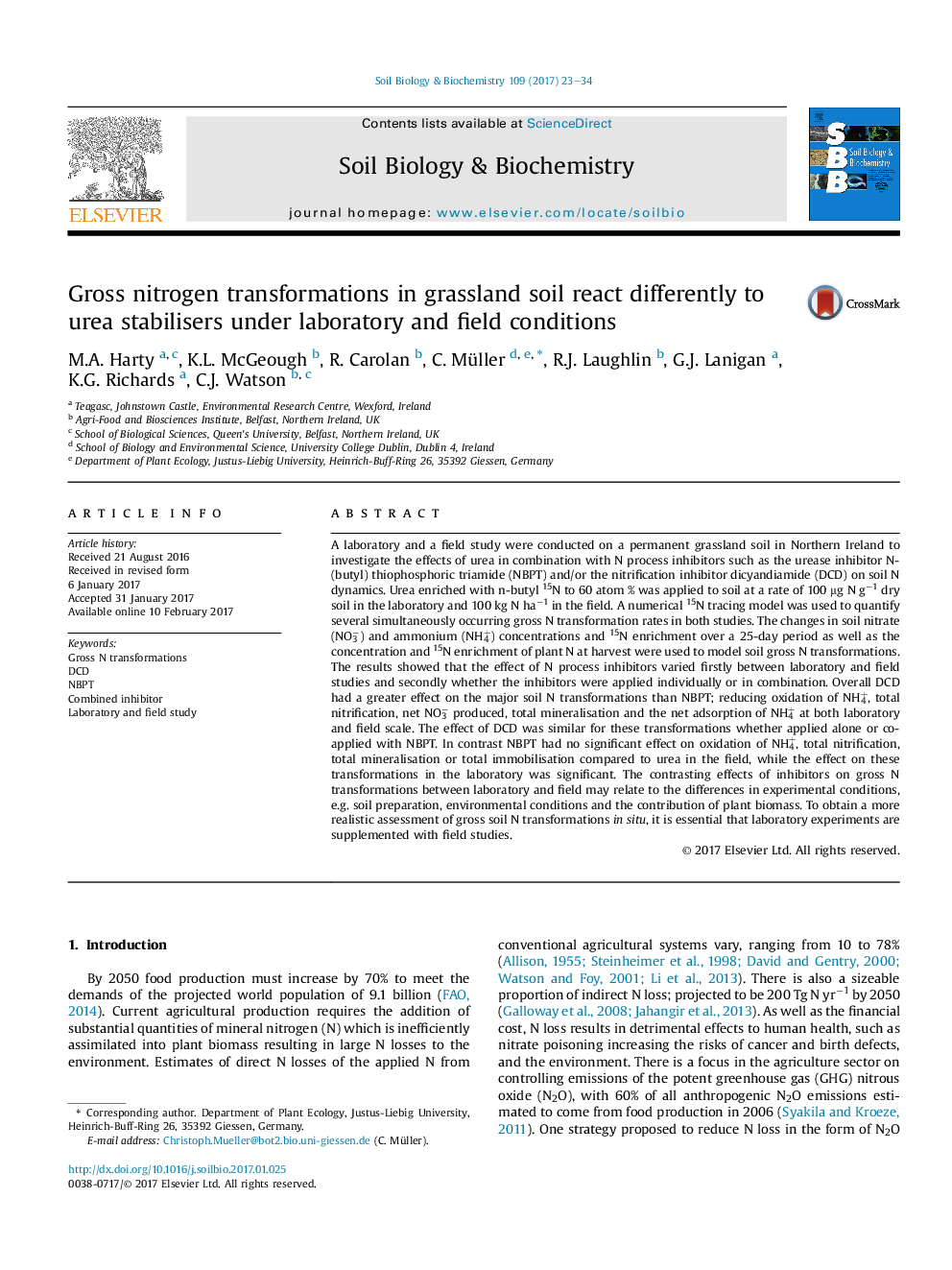| Article ID | Journal | Published Year | Pages | File Type |
|---|---|---|---|---|
| 5516472 | Soil Biology and Biochemistry | 2017 | 12 Pages |
â¢Effects of DCD and NBPT on gross transformations varied between laboratory and field.â¢Driven by contrasting experimental conditions, e.g. soil, plant and environmental.â¢DCD alone or with NBPT reduced nitrification, while NBPT had no significant effect on nitrification.â¢Combined transformations were not as informative as the gross transformations.â¢Fertiliser type (liquid vs. granular) was significant factor in NBPT effectiveness.
A laboratory and a field study were conducted on a permanent grassland soil in Northern Ireland to investigate the effects of urea in combination with N process inhibitors such as the urease inhibitor N-(butyl) thiophosphoric triamide (NBPT) and/or the nitrification inhibitor dicyandiamide (DCD) on soil N dynamics. Urea enriched with n-butyl 15N to 60 atom % was applied to soil at a rate of 100 μg N gâ1 dry soil in the laboratory and 100 kg N haâ1 in the field. A numerical 15N tracing model was used to quantify several simultaneously occurring gross N transformation rates in both studies. The changes in soil nitrate (NO3â) and ammonium (NH4+) concentrations and 15N enrichment over a 25-day period as well as the concentration and 15N enrichment of plant N at harvest were used to model soil gross N transformations. The results showed that the effect of N process inhibitors varied firstly between laboratory and field studies and secondly whether the inhibitors were applied individually or in combination. Overall DCD had a greater effect on the major soil N transformations than NBPT; reducing oxidation of NH4+, total nitrification, net NO3â produced, total mineralisation and the net adsorption of NH4+ at both laboratory and field scale. The effect of DCD was similar for these transformations whether applied alone or co-applied with NBPT. In contrast NBPT had no significant effect on oxidation of NH4+, total nitrification, total mineralisation or total immobilisation compared to urea in the field, while the effect on these transformations in the laboratory was significant. The contrasting effects of inhibitors on gross N transformations between laboratory and field may relate to the differences in experimental conditions, e.g. soil preparation, environmental conditions and the contribution of plant biomass. To obtain a more realistic assessment of gross soil N transformations in situ, it is essential that laboratory experiments are supplemented with field studies.
